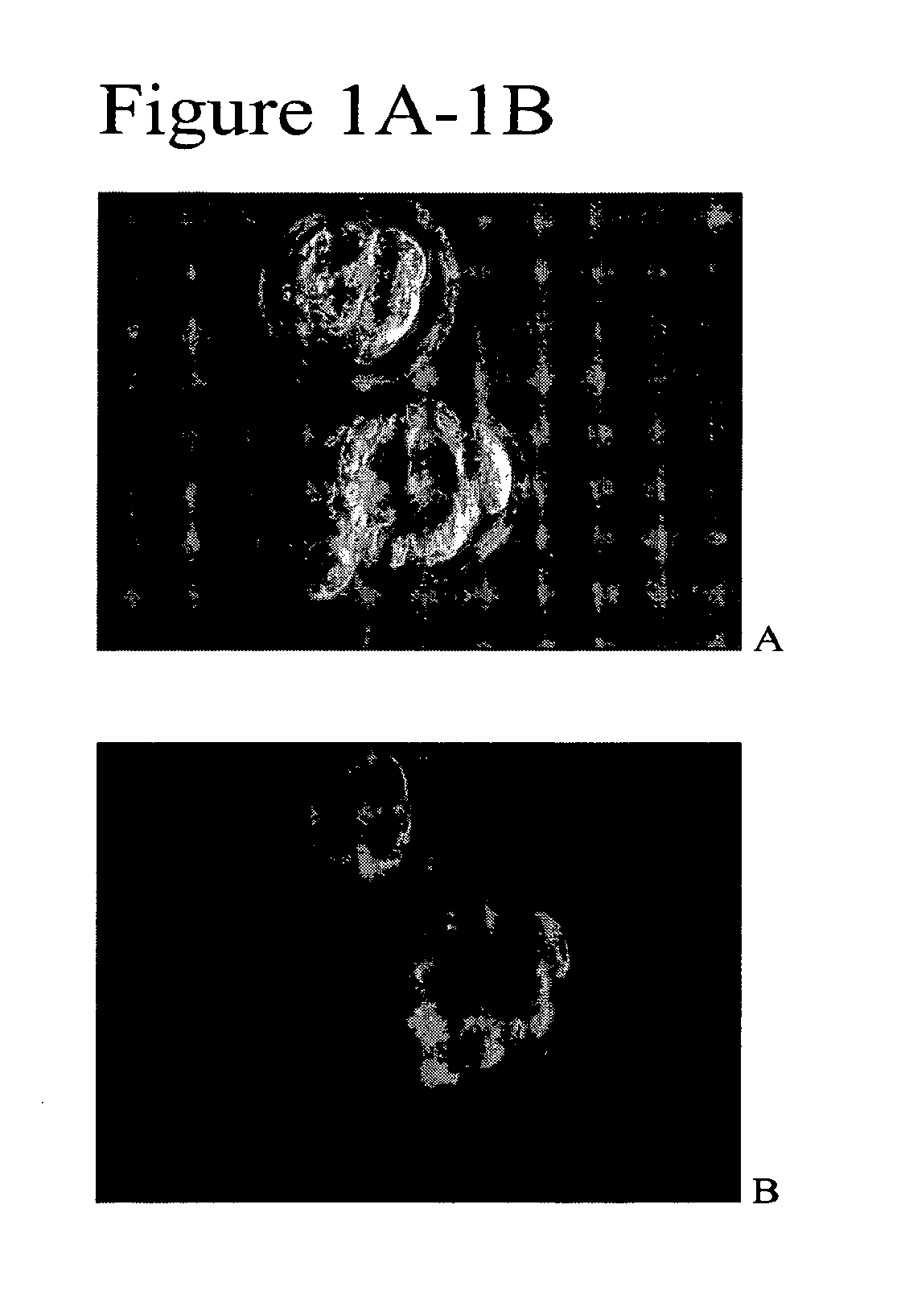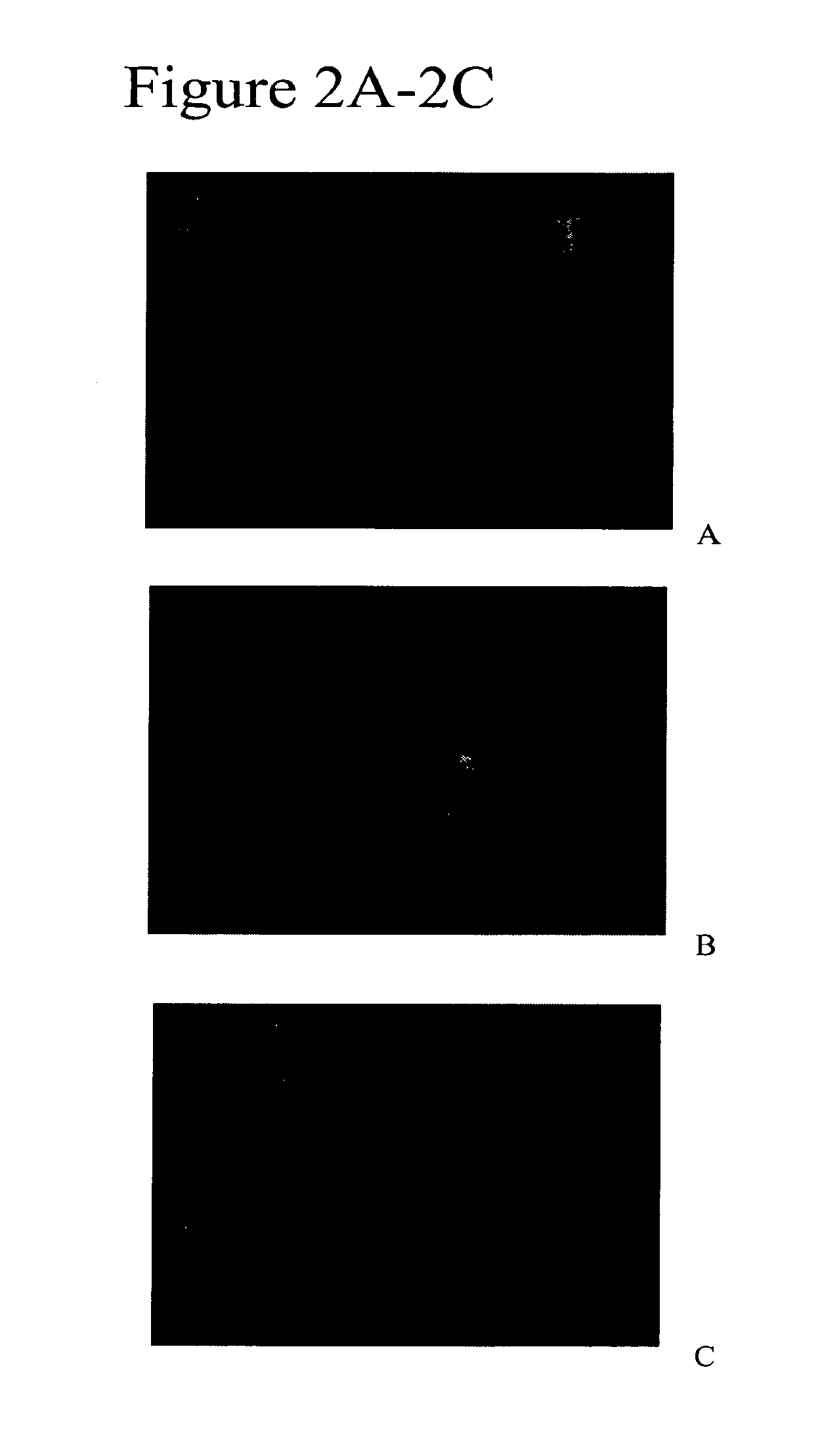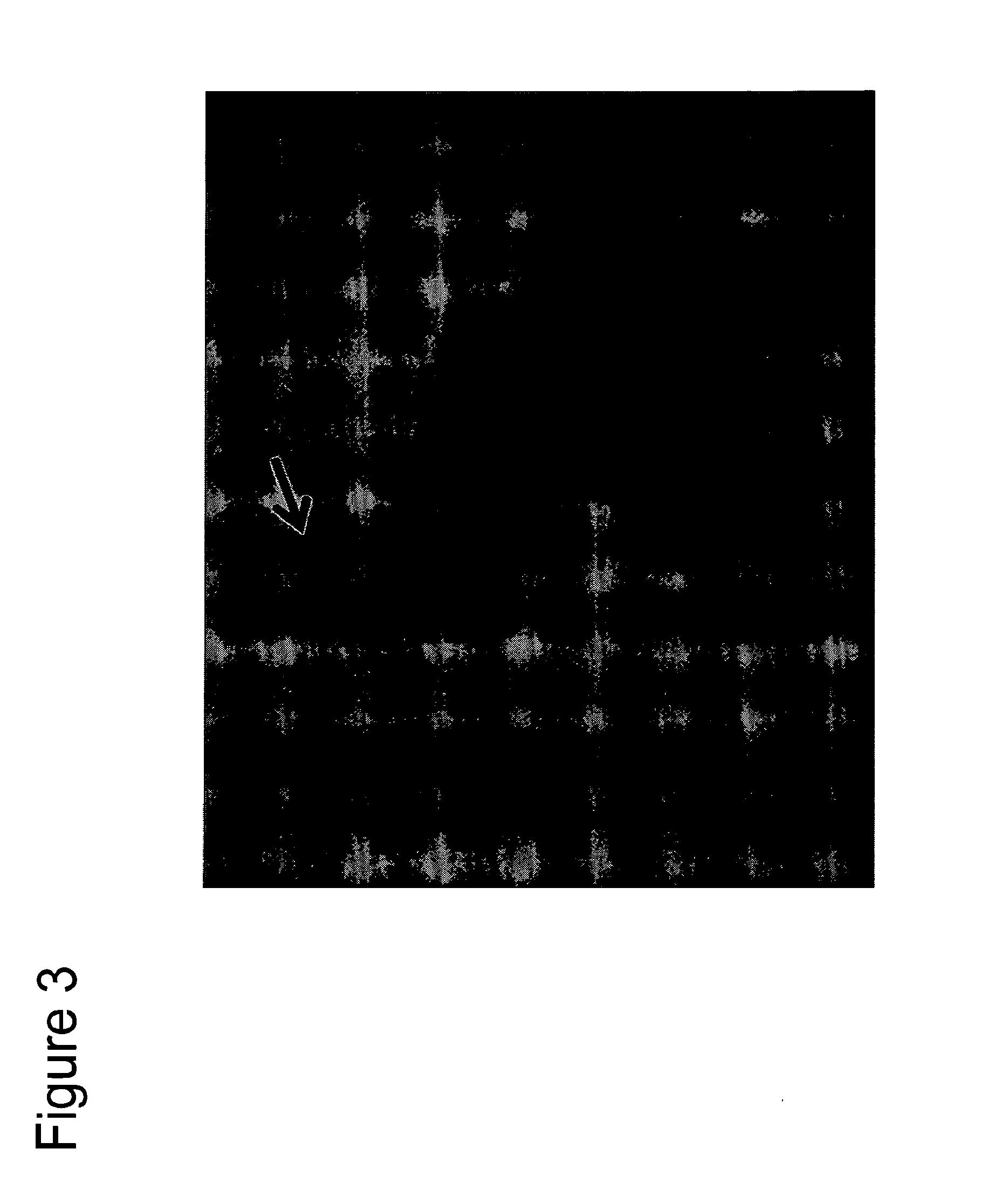Highly efficient methods for reprogramming differentiated cells and for generating animals and embryonic stem cells from reprogrammed cells
By using a fertilized embryo as a recipient in the cloning process, the method enhances the efficiency of cloning and reduces ethical concerns, enabling the production of transgenic animals with specific traits and pluripotent stem cells without the need for human oocytes.
- Summary
- Abstract
- Description
- Claims
- Application Information
AI Technical Summary
Benefits of technology
Problems solved by technology
Method used
Image
Examples
example 1
The Effect of Lagging Time Between Nuclear Injection and Enucleation on Pronuclear (PN) Stage Zygotes
[0224]Nuclear injection was performed on sixty-four PN stage embryos. GFP positive mouse ES cell nuclei were transferred into PN stage zygotes. Embryos were then cultured 3, 6, 9, or 12 hours before enucleating the original pronucleus. The cloned embryos were next cultured and their development was observed. A high percentage of embryos at all time points reached the two-cell stage, but only embryos enucleated 3 hours after nuclear transfer reached the four-cell stage (see Table 2).
TABLE 2The effect of lagging time between nuclear injection andenucleation on PN stage mouse zygotes.Time afterTotal # ofinjection (hours)zygotes2C4C31911206191100914900129600
example 2
Serial Cloning Using PN Stage Zygotes and 2-Cell Stage Embryos
[0225]In an effort to attain further development of cloned embryos, serial cloning was performed. Nuclear injection was performed as described in Example 1. Embryos were then cultured 3 hours before enucleating the original pronucleus. The cloned embryos were next cultured until the 2-cell stage.
[0226]A transplantation of dissociated individual cloned embryo cells into normal fertilized 2-cell stage mouse embryos was done at 18 hrs after the first cloning. The recipient embryos were enucleated prior to the nuclear transfer. Individual cloned blastomere cells were transplanted into the perivitellin space of the enucleated 2-cell stage embryos. Electrofusion of the transplanted blastomere and the enucleated embryo was performed by giving a single pulse of 150V DC for 15 microseconds.
[0227]The serially cloned embryos were cultured in KSOM medium and monitored for further development. Two of six embryos developed into blastoc...
example 3
Somatic Cell Cloning Using Two Cell Stage Mouse Embryos
[0228]It was hypothesized that cloned blastomeres in a mosaic embryo might be stimulated to develop further by non-cloned cells. One of the two blastomeres of a 2-cell stage mouse embryo was enucleated, and immediately after enucleation, an ES cell nuclei was injected into the enucleated blastomere. Embryos were cultured without any further manipulation in KSOM.
[0229]The cloned blastomeres divided the next day and contributed to GFP positive cells forming mosaic embryos (FIG. 2A-C). When these embryos developed to the 8-cell stage at least 3 blastomeres originated from the cloned blastomeres (FIG. 2B). Four of these cloned embryos developed into blastocyts (see Table 4). GFP positive blastomeres integrated into part of the blastocysts.
TABLE 4The effect of helper cells inside of the same zona pellucidawith cloned blastomeres in 2-cell stage cloned embryos.Total ## survived8C-Blasto-of 2 cellsinjection4CMcyst14844
PUM
| Property | Measurement | Unit |
|---|---|---|
| volume | aaaaa | aaaaa |
| temperature | aaaaa | aaaaa |
| diameter | aaaaa | aaaaa |
Abstract
Description
Claims
Application Information
 Login to View More
Login to View More - R&D
- Intellectual Property
- Life Sciences
- Materials
- Tech Scout
- Unparalleled Data Quality
- Higher Quality Content
- 60% Fewer Hallucinations
Browse by: Latest US Patents, China's latest patents, Technical Efficacy Thesaurus, Application Domain, Technology Topic, Popular Technical Reports.
© 2025 PatSnap. All rights reserved.Legal|Privacy policy|Modern Slavery Act Transparency Statement|Sitemap|About US| Contact US: help@patsnap.com



